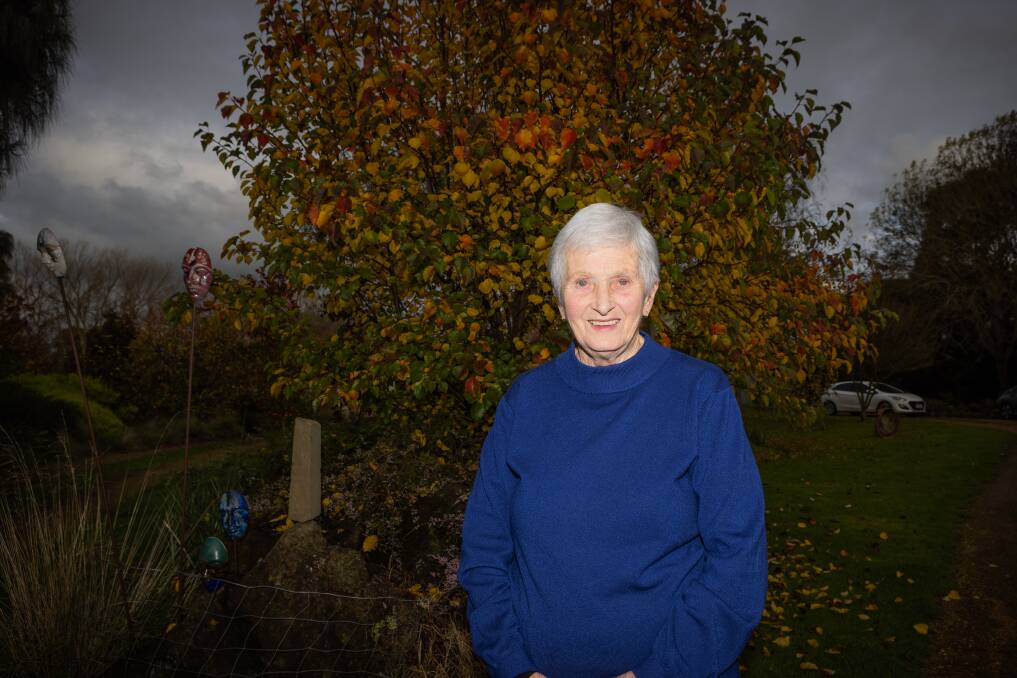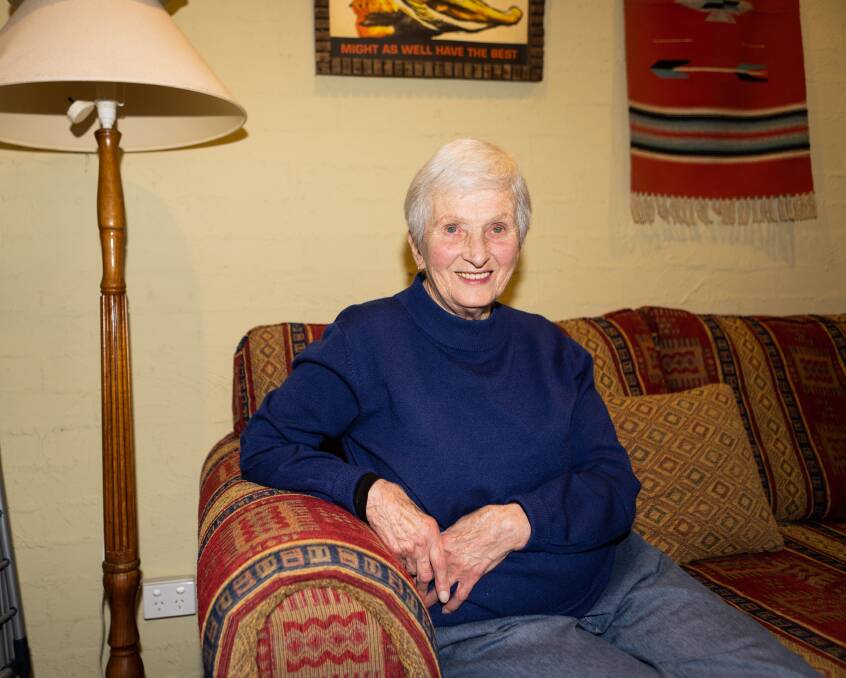
When 'blue baby' Shirley Brown left her Allansford home bound for America for life-saving heart surgery that in 1948 was still in its infancy, it was her fifth birthday.
Subscribe now for unlimited access.
or signup to continue reading
On Thursday, Shirley - now known by her married name MacCuspie - will celebrate her 80th birthday with family in Allansford - a milestone she says she is lucky to have reached.
Without the surgery, Shirley said, doctors didn't think she would live beyond her 10th birthday. "I've outlasted that by 70 years. I'm very lucky," she said.
The interest in her story made news not just across Australia but in America where crowds of newspaper photographers gathered at airports in Washington and San Francisco to greet her.
Born with a congenital malformation of the heart, Shirley was referred to as a "blue baby" - a lack of oxygen turning her lips and fingertips a shade of blue.
The artery in her heart was abnormally small and could not send enough blood to her lungs - a condition which left her unable to walk until she was two.
Playing with her two younger sisters or running left her exhausted.
"I couldn't walk too far," Shirley said.
From about six months old, her parents had been taking her to specialists to see if there was something they could do.
But there was no ray of hope until details of her case were sent to the US where doctors in the mid-'40s had pioneered a new heart surgery on children.
"There had only been one or two heart surgeries in Melbourne at that stage, that's why they decided to take the risk of sending me to America," Shirley said.

But the cost of getting to the US in post-war times was not cheap.
The five-day flight, months of accommodation and the cost of the operation was about 1500 pounds - a sum her parents who ran the general store in Allansford couldn't afford.
So Allansford and Warrnambool rallied with fundraising events and, with the help of special funds set up by The Standard and a Melbourne paper, the community raised 2500 pounds.
As one American newspaper reported in 1948, that was equivalent to $US10,000 - or about $125,000 in today's dollars.
"Even getting all that money and me going over there, they still didn't know if I was a candidate to be done," Shirley said.
Doctors had told her parents there was an eight in 10 chance the operation would be a success.
The first successful operation to treat blue baby syndrome was done in 1944 on a dog called Anna - a surgery considered experimental. The very first open heart surgery on a toddler was done later that year.
Paediatric cardiologist Helen Taussig, surgeon Alfred Blalock and surgical technician Vivien Thomas pioneered the procedure which by the time of Shirley's surgery had been done hundreds of times.
Dr Blalock, Dr Taussig and Dr Denton Cooley - who went on to be one of the world's premier cardiac surgeons - performed Shirley's operation.
With family lined up to keep the general store - opposite the Allansford hotel - open for the months they were away, Shirley and her parents began their long journey to America on May 25, 1948.
It was a long trip that required stopovers in Fiji and Hawaii, and Shirley had to wear an oxygen mask while she was on the plane.
She was dubbed the "blue baby", but as Shirley said: "purple's the word". The black and white photos from the 1940s hide her bluish lips and thickened fingertips.
"I can remember after I'd had the operation and Mum and Dad came in, I held up my fingers because they were pink and not purple." she said.
At just five, Shirley remembers very little of the trip and the operation.
"It was a big deal at the time but I don't really remember it," she said.
"The only thing I can remember ... when I was in hospital was that I was in an oxygen tent. I do remember that as plain as."
The day of the surgery, her parents arrived at the hospital hoping to see Shirley before she was taken into theatre but they were too late.
It was an anxious four-hour wait for news.
Even Warrnambool was kept informed of her progress via amateur radio operators on opposite sides of the world.
Her dad kept a diary of the whole trip and documented the media attention.
"A battery of newspaper photographers" gathered at the airport to see her off on her journey back to Australia, and even more greeted them when they stopped over at San Francisco, he wrote.
In 1966, she returned to John Hopkins Hospital in Baltimore - where the surgery took place - where she was told she was "very lucky" because most children had to be re-operated on within five years.
At 24 she did have to have another surgery, but until about 20 years ago she had had no issues.
"One day I was walking home from work when all of a sudden, I couldn't breathe. I went to the doctor and my heart was going about 2000 miles an hour," Shirley said.
But at 80 she is still going strong.
IN OTHER NEWS
Our journalists work hard to provide local, up-to-date news to the community. This is how you can access our trusted content:
- Bookmark https://www.standard.net.au/
- Make sure you are signed up for our breaking and regular headlines and newsletters
- Follow us on Facebook, Twitter, Instagram and LinkedIn
- Tap here to open our Google News page
- Join our Courts and Crime Facebook group and our dedicated Sport Facebook group
- Subscribe
Have you signed up to The Standard's daily newsletter and breaking news emails? You can register below and make sure you are up to date with everything that's happening in the south-west.















